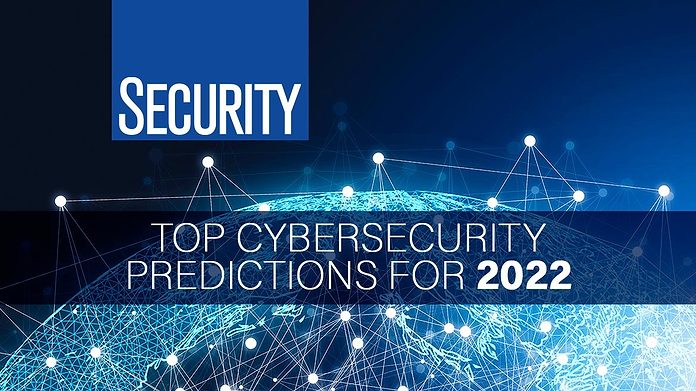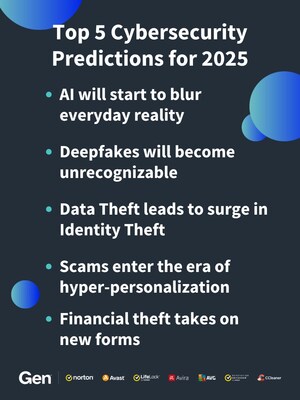Defend from evolving cyber attacks targeting businesses and individuals.
Leading Cybersecurity Predictions for 2024: Stay Ahead of Arising Risks
As we come close to 2024, the cybersecurity landscape is poised for considerable makeover, driven by arising threats that organizations need to not just prepare for but also tactically address. With governing adjustments on the perspective and a crucial emphasis on cybersecurity training, it is crucial for companies to reassess their approaches to remain resilient.
Increase of AI-Driven Assaults
As organizations progressively embrace man-made knowledge modern technologies, the possibility for AI-driven strikes is coming to be an extremely important problem in cybersecurity. Cybercriminals are leveraging AI to enhance the sophistication and efficacy of their assaults, producing a landscape where conventional protection actions might fail. These attacks can make use of artificial intelligence algorithms to recognize susceptabilities in systems and networks, resulting in extra targeted and damaging violations.
AI can automate the reconnaissance stage of an assault, allowing foes to gather vast quantities of information swiftly (cybersecurity and privacy advisory). This ability not only reduces the moment needed to release a strike however also increases its accuracy, making it harder for defenders to anticipate and minimize dangers. Furthermore, AI can be used to develop convincing phishing schemes, produce deepfake web content, or control data, better making complex the cybersecurity landscape
Organizations should prioritize the integration of AI-driven cybersecurity remedies to respond to these arising dangers. By utilizing advanced hazard detection systems, organizations can improve their capability to determine and neutralize AI-generated strikes in real time. Continuous investment in training and awareness programs is also vital, as it furnishes workers to recognize and reply to possible AI-driven threats successfully.
Increased Ransomware Refinement
The rise of AI-driven assaults is not the only trend improving the cybersecurity landscape; ransomware attacks have actually likewise advanced, becoming progressively sophisticated and targeted. As cybercriminals refine their approaches, organizations deal with enhanced threats that need flexible strategies to reduce prospective damage.
Modern ransomware dangers currently take advantage of progressed strategies, such as dual extortion, where aggressors not only secure data however also threaten to leak sensitive details if their needs are not fulfilled. This adds an added layer of stress on targets, often engaging them to pay ransoms to shield their reputations and consumer trust.
Additionally, the usage of automated devices and equipment understanding formulas by criminals has streamlined the attack procedure, allowing them to determine vulnerabilities more successfully and tailor their techniques against particular targets. Such advancements have resulted in a startling rise of assaults on crucial infrastructure, medical care systems, and supply chains, stressing the demand for robust cybersecurity frameworks that focus on real-time danger discovery and action.
To counter these developing risks, organizations need to invest in extensive training, progressed safety modern technologies, and case feedback plans that incorporate lessons picked up from past ransomware events, ensuring they continue to be one step in advance of increasingly complicated strikes.
Development of IoT Vulnerabilities
With the fast development of the Internet of Things (IoT), vulnerabilities linked with these interconnected gadgets have actually ended up being a vital problem for organizations and people alike. The proliferation of wise tools, from home appliances to commercial sensing units, has actually produced a large assault surface area for cybercriminals. Many IoT gadgets are released with marginal protection protocols, usually utilizing default passwords or out-of-date firmware, making them at risk to exploitation.
As devices come to be interconnected, the capacity for large assaults boosts. As an example, compromised IoT tools can serve as access points for assaulters to penetrate more safe and secure networks or launch Distributed Rejection of Solution (DDoS) strikes. cyber attacks. The absence of standardization in IoT safety gauges more aggravates these susceptabilities, as differing manufacturers execute differing levels of safety
Additionally, the raising refinement of malware targeting IoT tools postures substantial risks. Threat actors are continuously creating brand-new approaches to manipulate these weak points, causing prospective data breaches and unapproved accessibility to delicate details. As we relocate right into 2024, companies must prioritize IoT security, applying durable measures to protect their networks and alleviate the risks related to this quickly growing landscape.
Governing Adjustments Influencing Safety And Security

In 2024, we anticipate to see extra rigorous conformity requirements for organizations, especially those that manufacture or deploy IoT devices. The introduction of guidelines such as the European Union's Cyber Resilience Act and updates to existing frameworks like the NIST Cybersecurity Structure will highlight safety and security by design. Organizations will certainly be mandated to implement robust safety measures from the first phases of product advancement, ensuring a positive position versus potential vulnerabilities.
In addition, regulatory bodies are likely to impose considerable fines for non-compliance, compelling companies to focus on cybersecurity financial investments. This change will certainly not only enhance the general safety stance of organizations however will certainly likewise cultivate a culture of responsibility in securing customer data. As policies tighten, the onus will significantly drop on firms to show conformity and guard versus the more tips here ever-evolving hazards in the electronic landscape.
Emphasis on Cybersecurity Training
Organizations' commitment to cybersecurity training is becoming significantly important as threats progress and strike vectors increase. With cybercriminals constantly creating advanced strategies, it is critical for staff members in all levels to comprehend the threats and recognize their role in alleviating them. Comprehensive training programs gear up personnel with the knowledge and abilities necessary to determine prospective dangers, such as phishing strikes, social engineering strategies, and malware.
In addition, a society of cybersecurity understanding fosters vigilance among workers, minimizing the chance of human mistake, which read this post here stays a considerable vulnerability in many companies. Routinely upgraded training components that show the newest threats will certainly make sure that personnel continue to be informed and efficient in responding effectively.


In 2024, companies will likely prioritize ongoing education and simulation workouts, allowing staff members to practice their response to real-world circumstances. Partnership with cybersecurity experts for customized training options might additionally end up being more widespread. Ultimately, investing in worker training not only strengthens an organization's defense stance yet additionally grows a positive technique to cybersecurity, strengthening the concept that protection is a common obligation across the enterprise.
Conclusion
To conclude, the cybersecurity landscape in 2024 will be formed by the surge of AI-driven assaults, progressively advanced ransomware tactics, and the expansion of susceptabilities related to IoT gadgets. Regulatory adjustments will certainly require enhanced conformity procedures, highlighting the significance of integrating security deliberately. A strong focus on extensive cybersecurity training will be crucial in cultivating an organizational culture durable to arising hazards. Positive adaptation to look these up these fads will be essential for reliable defense approaches.